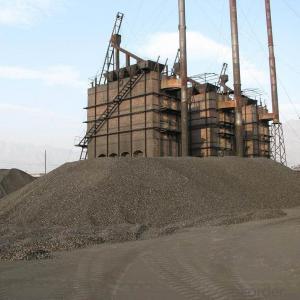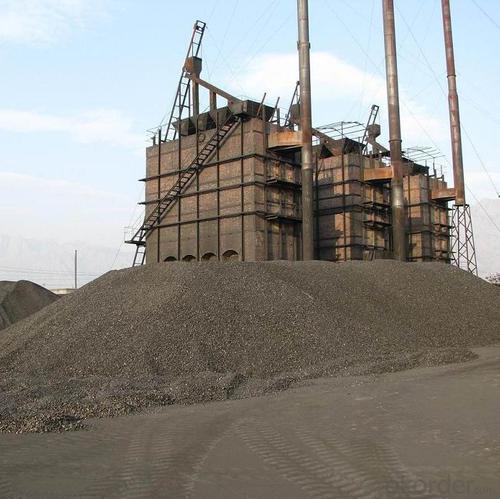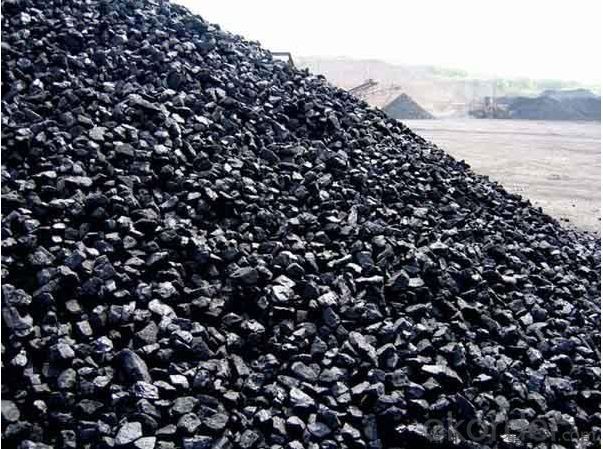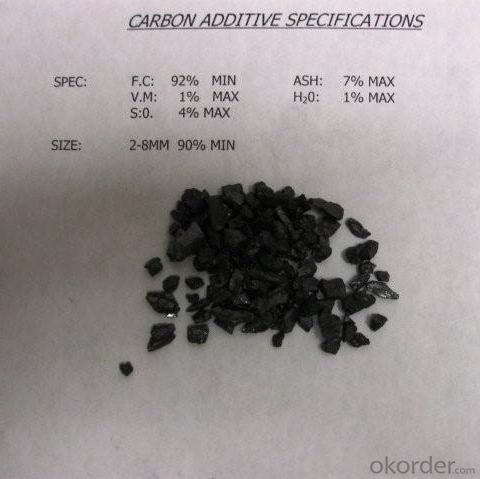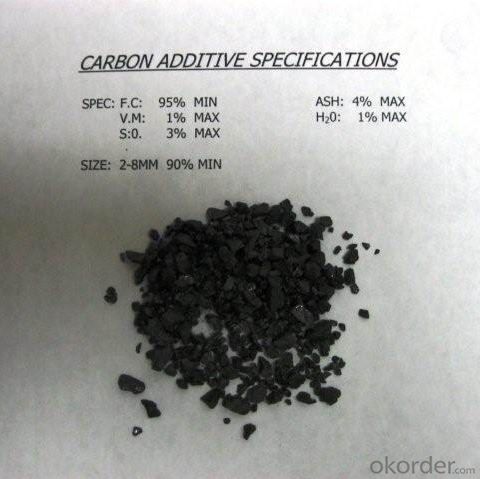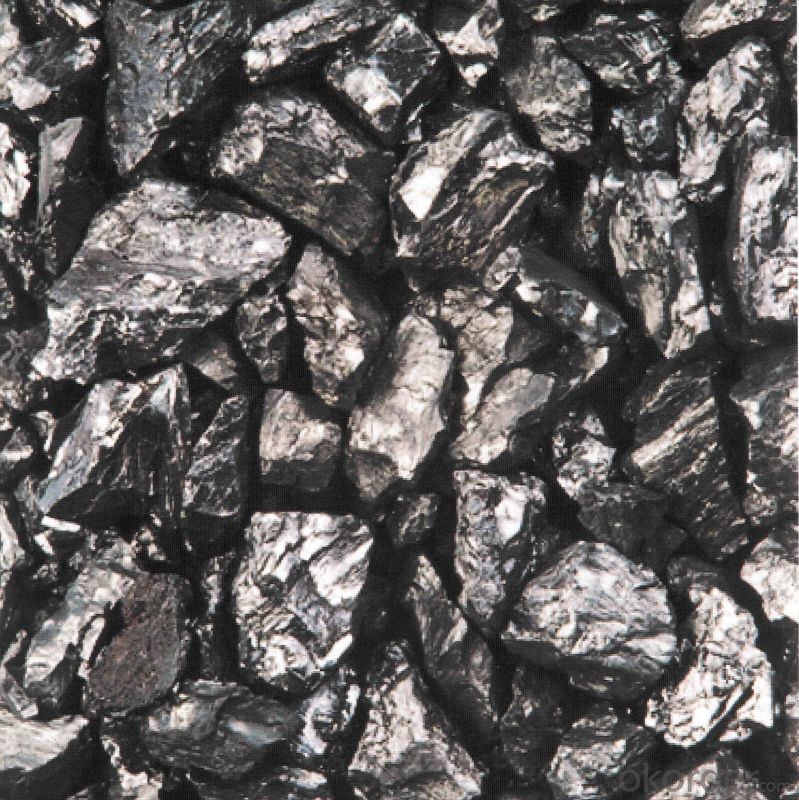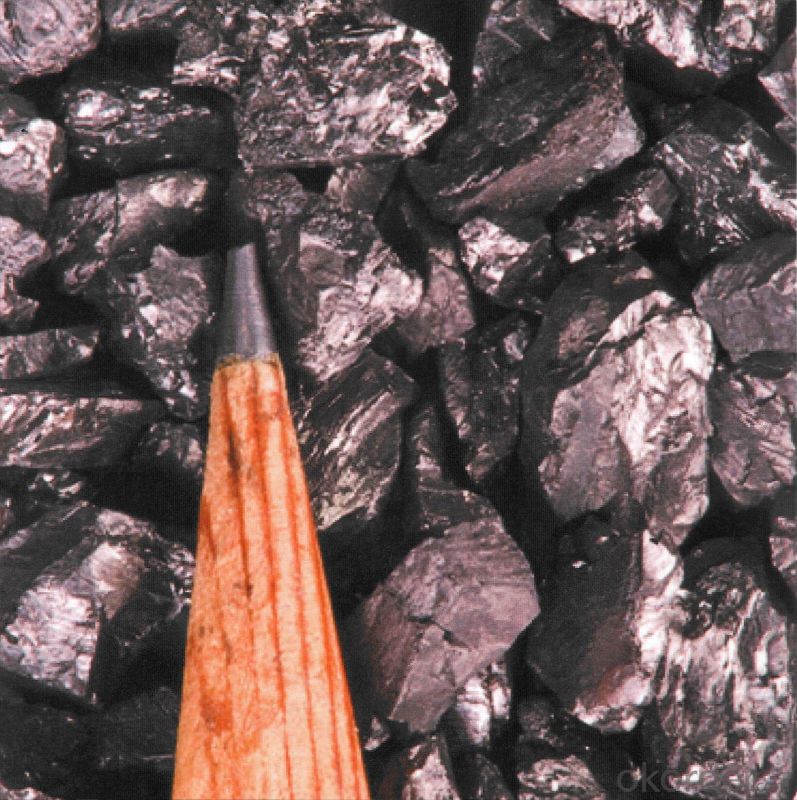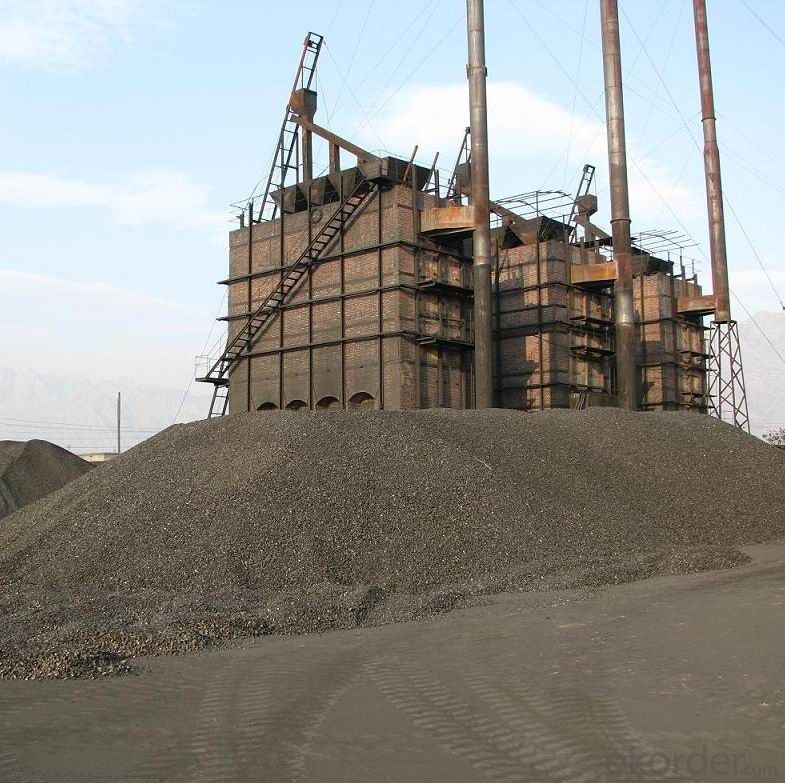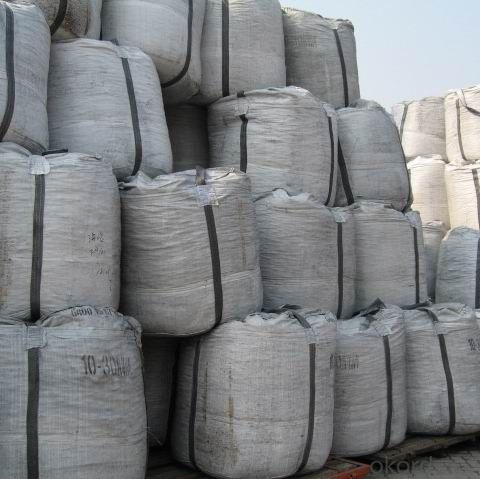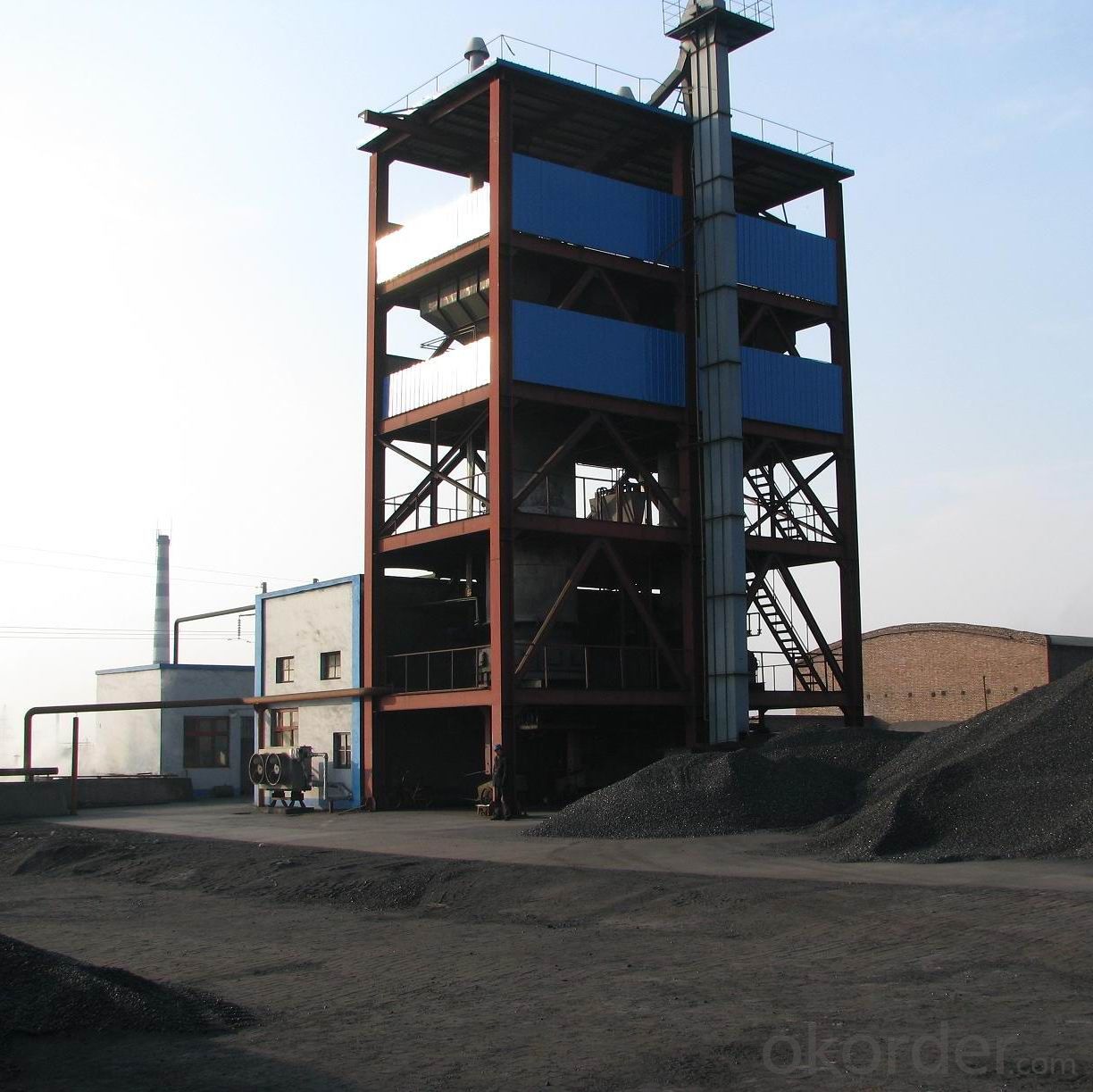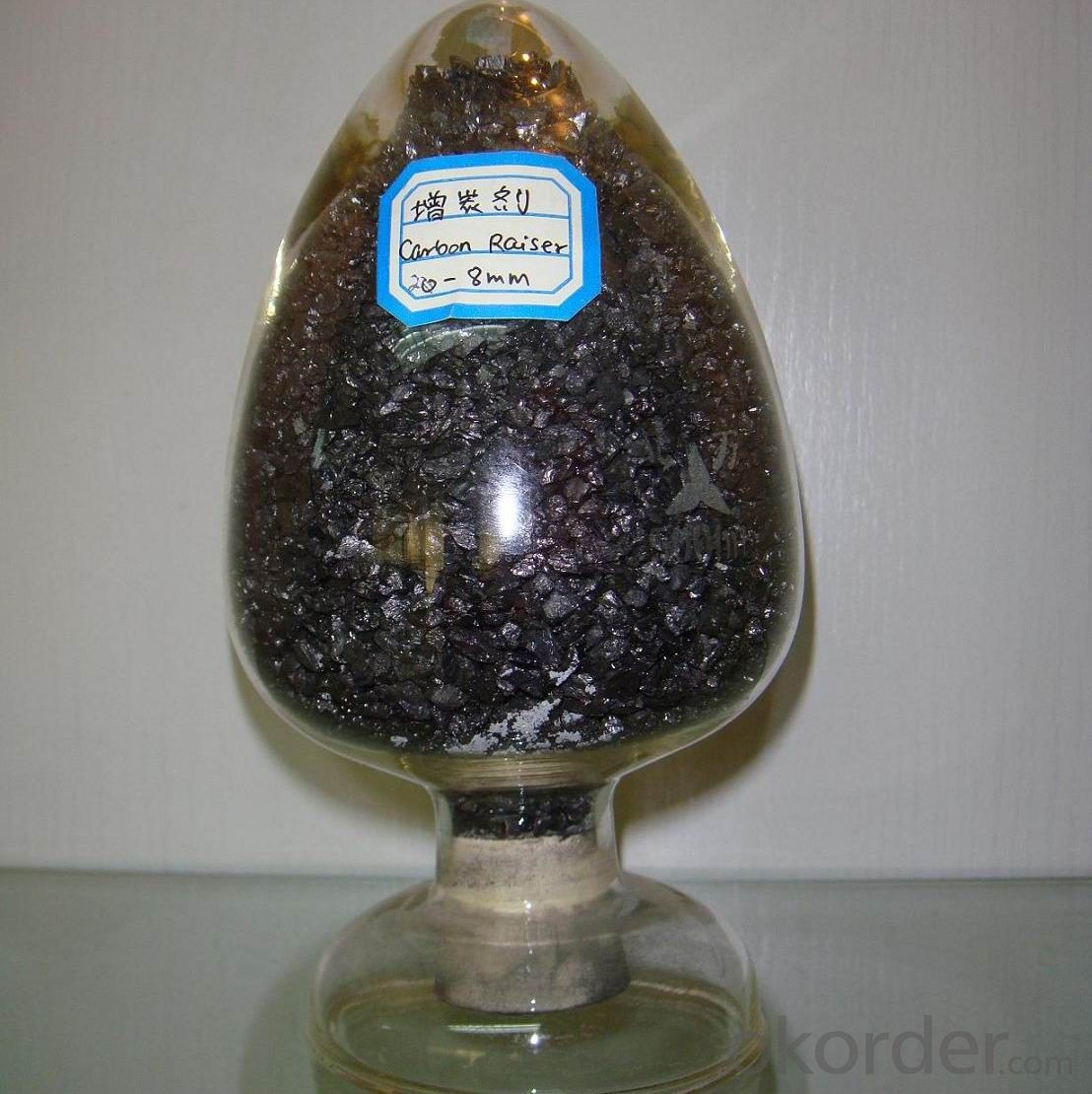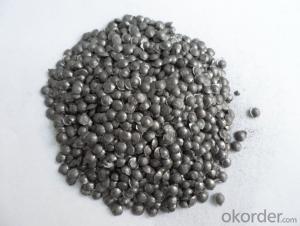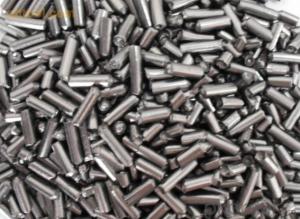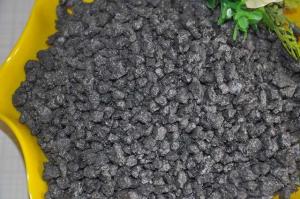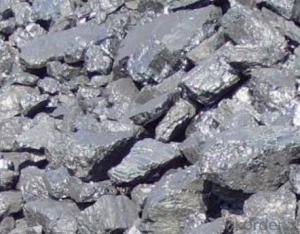Carbon Additve Low Sulphur for Steelmaking
- Loading Port:
- Tianjin
- Payment Terms:
- TT or LC
- Min Order Qty:
- 20 m.t.
- Supply Capability:
- 10000 m.t./month
OKorder Service Pledge
OKorder Financial Service
You Might Also Like
Quick Details
Place of Origin: Ningxia, China (Mainland)
Application: steel making
Shape: granule
Dimensions: FC90-95%
Product Type: Carbon Additive
C Content (%): 90-95% MIN
Working Temperature: -
S Content (%): 0.5%MAX
N Content (%): -
H Content (%): 0.6%MAX
Ash Content (%): 8.5%MAX
Volatile: 2%MAX
ADVANTAGE: low ash & sulfur
COLOR: Black
RAW MATERIAL: TaiXi anthracite
Packaging & Delivery
| Packaging Details: | In 1MT plastic woven bag. |
|---|---|
| Delivery Detail: | 30-40DAYS |
Specifications
Carbon Additve Low Sulphur for Steelmaking
Carbon Additve low Ash,S,P
FC>95% ASH<4% S<0.3%
It is made from TaiXi anthracite.
instead of pertrol coke reduce the cost
Structure
Carbon Additve Low Sulphur for Steelmaking
Shape: granule
Dimensions: FC90-95%
Product Type: Carbon Additive
C Content (%): 90-95% MIN
Working Temperature: -
S Content (%): 0.5%MAX
N Content (%): -
H Content (%): 0.6%MAX
Ash Content (%): 8.5%MAX
Volatile: 2%MAX
ADVANTAGE: low ash & sulfur
COLOR: Black
RAW MATERIAL: TaiXi anthracite
Feature
Carbon Additve Low Sulphur for Steelmaking
Specifications (%): | ||||||
Grade | F.C | Ash | V.M | Moisture | S | Size |
CR-95 | ≥95 | <4 | <1 | <1 | <0.3 | 0-30mm |
CR-94 | ≥94 | <4 | <1 | <1 | <0.3 | |
CR-93 | ≥93 | <6 | <1 | <1 | <0.4 | |
CR-92 | ≥92 | <7 | <1 | <1 | <0.4 | |
CR-91 | ≥91 | <8 | <1 | <1 | <0.4 | |
CR-90 | ≥90 | <8.5 | <1.5 | <2 | <0.4 | |
Image
Carbon Additve Low Sulphur for Steelmaking
FAQ:
Carbon Additve Low Sulphur for Steelmaking
Why we adopt carbon additive?
Carbon Additives used as additive in steel making process. It made from well-selected Tai Xi anthracite which is low in content of ash, sulphur, phosphorus, high heat productivity, high chemically activation.
Mainly industry property of it is: instead of traditional pertroleum coal of Carbon Additives, reduce the cost of steelmaking.
Advantage:
Carbon Additve Low Sulphur for Steelmaking
1.High quality and competitive price.
2.Timely delivery.
3.If any item you like. Please contact us.
Your sincere inquiries are typically answered within 24 hours.
- Q: How does carbon contribute to the structure of DNA?
- Carbon is a crucial element in the structure of DNA. It plays a fundamental role in the formation of the sugar-phosphate backbone of the DNA molecule. The backbone is composed of alternating sugar and phosphate molecules, and the sugar molecule in DNA is deoxyribose. Carbon is a major component of deoxyribose, with each deoxyribose sugar containing five carbon atoms. These carbon atoms provide the backbone with stability and rigidity, allowing it to maintain the overall structure of the DNA molecule. Furthermore, carbon is also involved in the formation of the nitrogenous bases that make up the rungs of the DNA ladder. There are four nitrogenous bases in DNA: adenine (A), guanine (G), cytosine (C), and thymine (T). Carbon atoms are present in the structure of each of these bases, contributing to their unique chemical properties. Carbon-containing functional groups, such as amino and keto groups, participate in hydrogen bonding and stacking interactions that determine the base pairing within the DNA double helix. In summary, carbon is an essential component of DNA's structure. It contributes to the stability and rigidity of the sugar-phosphate backbone and is also involved in the formation of the nitrogenous bases. The unique properties of carbon allow DNA to maintain its double helix structure and facilitate the accurate transmission of genetic information.
- Q: What kinds of barbecue carbon do you have?
- The carbon has uniform size, long burning time, uniform fire, no smoke and no expensive price. Many professional barbecue shops choose this kind of carbon. The disadvantage is that it should not ignite. If only two or three people barbecue, with this carbon, then people are full, carbon has not used up, can not help but feel a little wasted.
- Q: How does carbon affect the formation of acid rain?
- The formation of acid rain is not directly influenced by carbon. Instead, it is mainly caused by the release of sulfur dioxide (SO2) and nitrogen oxides (NOx) when fossil fuels like coal and oil are burned. However, the emission of carbon dioxide (CO2) from the burning of these fuels contributes to climate change and indirectly impacts the formation of acid rain. The rise in atmospheric carbon dioxide levels leads to the trapping of heat, resulting in global warming. Consequently, this alters weather patterns and increases the frequency and intensity of extreme weather events. These alterations can affect the formation of acid rain by changing how sulfur dioxide and nitrogen oxides disperse. Furthermore, when fossil fuels are burned and release carbon dioxide, they also release sulfur dioxide and nitrogen oxides as byproducts. When these gases react with water, oxygen, and other chemicals in the atmosphere, they can be converted into sulfuric acid and nitric acid respectively. The increased combustion of fossil fuels, due to higher carbon dioxide emissions, can lead to a greater release of sulfur dioxide and nitrogen oxides into the atmosphere, exacerbating the formation of acid rain. Therefore, while carbon dioxide itself does not directly contribute to acid rain formation, its emissions indirectly contribute by amplifying the release and dispersion of sulfur dioxide and nitrogen oxides. To mitigate the formation of acid rain and its adverse effects on the environment and human health, it is crucial to reduce carbon dioxide emissions, as well as sulfur dioxide and nitrogen oxide emissions.
- Q: What are the different allotropes of carbon?
- The different allotropes of carbon include diamond, graphite, graphene, carbon nanotubes, and fullerenes.
- Q: What are the effects of carbon emissions on the stability of mangrove forests?
- Carbon emissions have detrimental effects on the stability of mangrove forests. Increased carbon dioxide in the atmosphere leads to ocean acidification, which negatively impacts mangroves by inhibiting their growth and reducing their ability to survive. Additionally, rising temperatures resulting from carbon emissions contribute to sea level rise, which increases the risk of flooding and erosion in mangrove habitats. This disrupts the delicate balance of the ecosystem and threatens the overall stability and biodiversity of mangrove forests.
- Q: How does carbon impact the pH balance of oceans?
- Carbon dioxide (CO2) released into the atmosphere is absorbed by the oceans, leading to a process called ocean acidification. When CO2 dissolves in seawater, it reacts with water to form carbonic acid, which then releases hydrogen ions, increasing the acidity of the water. This increase in acidity disrupts the pH balance of the oceans, making them more acidic. The increased acidity has numerous negative impacts on marine life and ecosystems. Many marine organisms, such as coral reefs, shellfish, and phytoplankton, rely on calcium carbonate to build their shells and skeletons. However, in more acidic waters, calcium carbonate becomes scarcer, making it harder for these organisms to maintain their structures. This can lead to weakened shells, reduced growth, and even death. Ocean acidification also affects the reproductive and physiological processes of marine organisms. For example, it can interfere with the development of fish larvae and disrupt the ability of some species to detect predators or find food. Additionally, the increased acidity can also harm the organisms that depend on these species for food, creating a ripple effect throughout the food chain. Furthermore, ocean acidification can impact the overall health and functioning of marine ecosystems. Coral reefs, often referred to as the "rainforests of the sea," provide habitats for a vast array of marine species. As the acidity of the oceans increases, coral reefs become more vulnerable and are at greater risk of bleaching and ultimately dying off. This loss of coral reefs would have devastating consequences for the biodiversity and productivity of marine ecosystems. In conclusion, the increase in carbon dioxide levels in the atmosphere leads to the absorption of CO2 by the oceans, resulting in ocean acidification. This process disrupts the pH balance of the oceans, making them more acidic. The increased acidity has detrimental effects on marine life, including the ability of organisms to build shells, reproduce, and function within their ecosystems. Addressing the issue of carbon emissions is crucial to mitigating the negative impacts of carbon on the pH balance of oceans and preserving the health and integrity of marine ecosystems.
- Q: Is the hardness or softness of the steel with higher carbon content?
- The increase of carbon content also reduces the weldability and corrosion resistance of steel, and increases the cold brittleness and aging tendency of steel.
- Q: How is carbon dating used to determine the age of fossils?
- Carbon dating is a scientific method used to determine the age of fossils and other organic materials. It relies on the fact that carbon-14, an isotope of carbon, is present in the atmosphere and taken up by living organisms while they are alive. Once an organism dies, it no longer takes in carbon-14 and the amount of this isotope begins to decrease over time as it undergoes radioactive decay. To determine the age of a fossil using carbon dating, scientists first extract a small sample of the fossil. This sample is then treated with chemicals to remove any contaminants and extract the carbon from the organic material. The extracted carbon is then converted into carbon dioxide gas, which is used to create graphite targets for measuring the levels of carbon-14. Scientists use a technique called Accelerator Mass Spectrometry (AMS) to count the number of carbon-14 and carbon-12 atoms in the sample. The ratio of carbon-14 to carbon-12 is then used to calculate the age of the fossil, based on the known half-life of carbon-14, which is approximately 5730 years. By comparing the amount of carbon-14 remaining in the fossil to the amount of carbon-14 in the atmosphere at the time the organism died, scientists can determine the approximate age of the fossil. This method is particularly useful for dating organic materials up to about 50,000 years old. For older fossils, other methods such as potassium-argon dating or uranium-lead dating are typically used.
- Q: How does carbon impact the availability of clean air?
- The availability of clean air is impacted by carbon, which contributes to air pollution and climate change. Burning carbon-based fuels like coal, oil, and natural gas for energy production releases carbon dioxide (CO2) into the atmosphere. CO2 is a greenhouse gas that traps heat in the Earth's atmosphere, causing the planet to warm up and leading to climate change. Air quality is affected by climate change in various ways. Increasing temperatures can raise the frequency and intensity of wildfires, which release significant amounts of carbon dioxide and other pollutants into the air. Moreover, higher temperatures can worsen the formation of ground-level ozone, a harmful air pollutant that can trigger respiratory problems and other health issues. Furthermore, carbon emissions contribute to the creation of particulate matter, including soot and fine particles, which can be harmful when breathed in. These particles originate from the combustion of fossil fuels in vehicles, power plants, and industrial processes. Inhaling particulate matter can result in respiratory and cardiovascular problems, particularly affecting vulnerable populations such as children, the elderly, and individuals with pre-existing respiratory conditions. To improve air quality and ensure the availability of clean air, it is crucial to reduce carbon emissions. This can be achieved by transitioning to renewable energy sources, enhancing energy efficiency, and implementing policies to decrease carbon emissions. Additionally, promoting sustainable transportation, reducing deforestation, and adopting cleaner industrial practices can contribute to cleaner air by reducing carbon emissions and other pollutants.
- Q: How does carbon impact the availability of renewable energy sources?
- Carbon impacts the availability of renewable energy sources in a number of ways. Firstly, carbon emissions from the burning of fossil fuels contribute to climate change, which is a significant threat to the availability and sustainability of renewable energy sources. The increased frequency and intensity of extreme weather events caused by climate change can damage renewable energy infrastructure, such as wind turbines and solar panels. Secondly, carbon-intensive industries, such as coal mining and oil extraction, can limit the growth and development of renewable energy technologies. These industries have historically received substantial subsidies and support from governments, which can hinder the progress of renewable energy by diverting resources and investment away from cleaner alternatives. Furthermore, carbon emissions contribute to air pollution, which can have negative impacts on the efficiency and performance of renewable energy systems. For example, air pollution can reduce the amount of sunlight reaching solar panels or obstruct wind flow to turbines, thereby decreasing their energy output. Additionally, the reliance on carbon-based energy sources creates a significant market competition for renewable energy. Fossil fuels often have lower costs due to their established infrastructure and economies of scale, making it challenging for renewable energy sources to compete on a cost basis. This can limit the availability and accessibility of renewable energy options, particularly in developing countries where fossil fuels are often the cheaper and more readily available option. To address these challenges, it is crucial to reduce carbon emissions through transitioning to renewable energy sources and implementing policies that incentivize their adoption. By reducing carbon emissions, we can mitigate the impacts of climate change on renewable energy infrastructure and create a more conducive environment for the development and deployment of clean energy technologies.
Send your message to us
Carbon Additve Low Sulphur for Steelmaking
- Loading Port:
- Tianjin
- Payment Terms:
- TT or LC
- Min Order Qty:
- 20 m.t.
- Supply Capability:
- 10000 m.t./month
OKorder Service Pledge
OKorder Financial Service
Similar products
Hot products
Hot Searches
